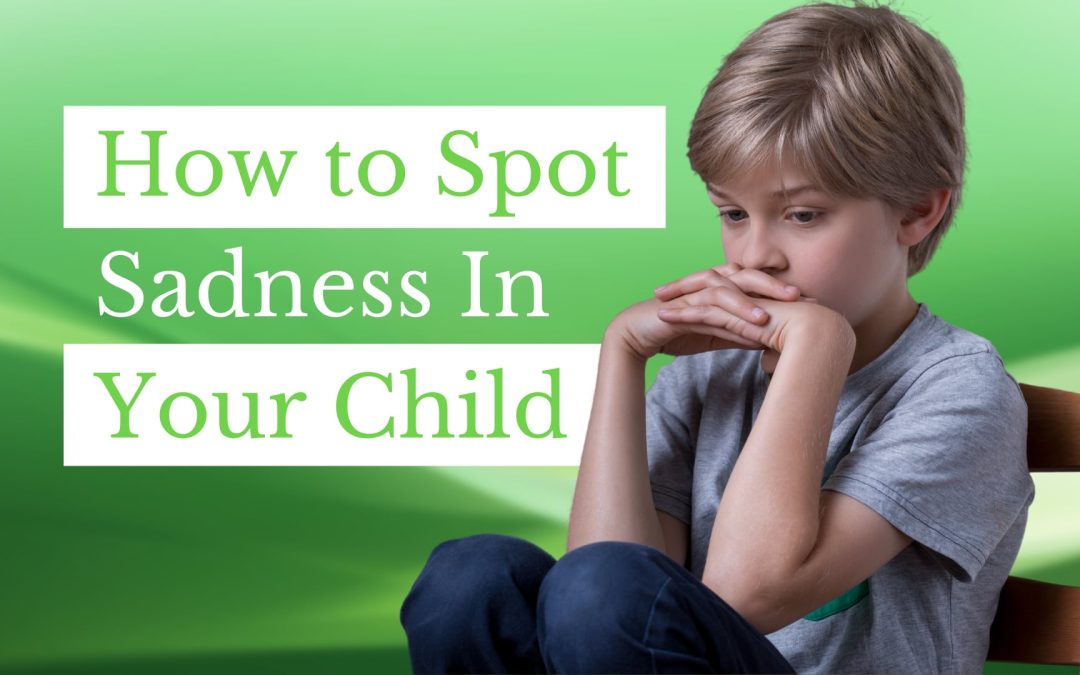As a parent, you want to see your child thrive, smile, and feel confident in who they are. But sometimes, that sparkle in their eyes dims, and you’re left wondering if it’s just a bad day or something deeper.
You’re not alone.
Many children struggle to express sadness, and instead of telling us how they feel, they show it through behavior changes, quiet withdrawal, or even outbursts. It’s not always easy to decode what’s going on.
Hi, I’m Susan Stutzman, owner and therapist at Kid Matters Counseling. Today, I want to share some quick tips on how to spot sadness in your child and ways you can come alongside them to navigate this feeling.
How Can You Spot Sadness In Your Child?
Sadness might not always look like tears. It can show up as withdrawal from activities they usually enjoy, changes in sleep or appetite, or even acting out. Pay attention to shifts in behavior, as these may be signs that your child is struggling emotionally.
Once you’ve spotted sadness, it’s important to help your child navigate through it.
Help Your Child Navigate Their Sadness
Start by acknowledging their feelings. Sometimes, just letting your child know that it’s okay to feel sad can be a huge comfort. Help them express what’s going on, whether through words, drawings, or play. It’s important they feel heard and validated.
This shows them that sadness is a natural emotion and it’s okay to feel it.
Positive Reinforcement for a Sad Child
Positive reinforcement can help too. Encourage small steps forward, even if it’s just getting out of bed or talking about what’s bothering them. Praise your child for showing resilience, even when they’re feeling sad.
This helps build their confidence in managing their emotions.
Encouraging Open Conversations About Sadness
Create a safe space for open conversations. Let your child know that they can always talk to you about their feelings. Make it a regular practice to check in, not just when they seem sad, but as part of your daily routine.
By normalizing these conversations, your child will feel more comfortable sharing their emotions in the future.
When to Consider Counseling for Your Child’s Sadness
If your child’s sadness persists or starts interfering with their daily activities, like school, friendships, or family life, it might be time to consider professional help. Counseling can provide your child with additional tools to cope and heal.
As a therapist, I’m here to help guide families through these challenging moments and provide the support your child needs to work through their sadness.
I hope these tips help you support your child during tough emotional times. Remember, you’re not alone in this. If you need help, feel free to reach out to me at Kid Matters Counseling. Take care, and be kind to yourselves and your children.

Susan Stutzman
Owner | Child Therapist | LCPC, RPT
Parenting is hard! But you don’t have to do it alone. I work with children and parents to resolve emotional conflict, cultivate healing, and nurture hope.
New Clients Call: (855) 586-1802
Current Clients: (855) 543-7687
Ask Us Anything!
We help anxious kids and frustrated parents. We serve Hinsdale & the Western Suburbs of Chicago.
Made with ♥︎ in Hinsdale, Illinois for Chicago
Built By Brand Your Practice.
Kid Matters Counseling, P.C. DISCLAIMER: This website and blog are for informational, educational and general discussion purposes only. It is understood that no guarantee or warranty arises from the information provided, discussed or commented upon in this website and blog nor does it constitute legal or other professional advice on any subject matter. Access to this website and blog is voluntary and at the sole risk of the user. If you think that you have a medical emergency (including clinical), call your doctor or 911 immediately. A licensed medical professional should be consulted for diagnosis and treatment of any and all medical conditions. While the information contained within this website and blog is periodically updated, no guarantee is given that the information provided is correct, complete, and/or up-to-date. See our complete Privacy Policy and Terms of Service.





